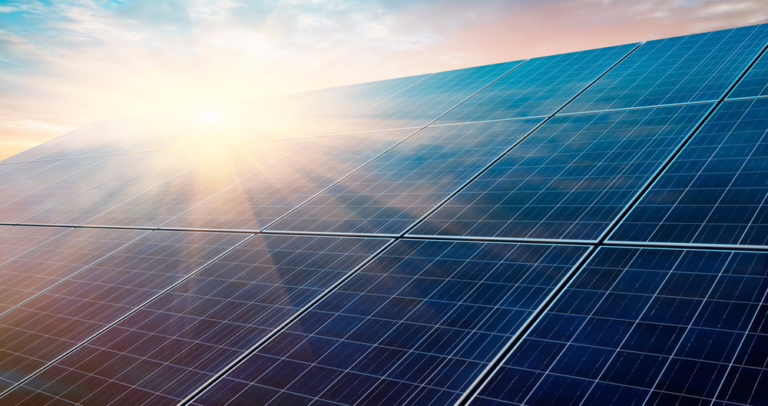solargardens
March 24, 2023
Solar energy is a type of renewable energy that is harnessed from the sun’s radiation. It is considered one of the cleanest sources of energy as it does not produce any harmful pollutants or emissions that can harm the environment. In this article, we will explore the origins of solar energy and exactly how it works.

The origins of solar energy panels can be traced back to the 19th century, when scientists first began to experiment with the properties of light and electricity. In 1839, a French physicist named Alexandre-Edmond Becquerel discovered the photovoltaic effect, which is the basic principle behind solar panels.
Becquerel observed that certain materials, such as silver chloride, would produce a small electric current when exposed to light. This discovery was later expanded upon by other scientists, including William Grylls Adams and Richard Day, who discovered that selenium had an even stronger photovoltaic effect than silver chloride.
In 1883, Charles Fritts, an American inventor, built the first solar cell using selenium coated with a thin layer of gold. The cell was only about 1% efficient, meaning that it could only convert about 1% of the sunlight that hit it into electricity. However, Fritts’ invention laid the groundwork for future advances in solar cell technology.
In the decades that followed, scientists continued to experiment with different materials and designs for solar cells. One of the key breakthroughs came in the 1950s, when researchers at Bell Labs developed a more efficient type of solar cell using silicon instead of selenium. This new type of solar cell was able to convert up to 6% of the sunlight that hit it into electricity, a significant improvement over earlier designs.
Over the next few decades, researchers continued to refine and improve solar cell technology. In the 1970s, the oil crisis sparked renewed interest in renewable energy sources, including solar power. This led to a surge in research and development, as well as increased investment in solar energy.
Today, solar panels are widely used to generate electricity for homes, businesses, and even entire communities. The technology has come a long way since the early days of photovoltaic research, and solar panels are now more efficient and affordable than ever before. While there is still much work to be done to fully harness the power of solar energy, the discoveries and innovations of the past two centuries have laid a solid foundation for the future of solar power.
Solar energy can be harnessed in several ways, but the most common method is through the use of photovoltaic (PV) cells. PV cells are made up of semiconductor materials such as silicon, which can convert sunlight directly into electricity. When sunlight strikes the PV cells, it causes the electrons in the semiconductor material to become excited, creating an electrical current.
Solar energy works by converting sunlight into usable energy. The process involves several steps, including:
Solar energy has several advantages over other sources of energy. First, it is a renewable energy source, which means that it will never run out. Second, it is a clean energy source, which means that it does not produce any harmful emissions or pollutants. Third, solar energy can be installed on rooftops and unusable land such as landfills, making it accessible to a wide range of people.
In conclusion, solar energy is a renewable and clean source of energy that is harnessed from the sun’s radiation. By converting sunlight into usable electricity, solar energy can power homes, businesses, and even entire cities. As technology advances, the efficiency and affordability of solar energy will continue to improve, making it an even more viable source of energy for the future.
Sources:
Renewable energy in global electricity generation is not just a concept; it's a reality shaping our present and defining our...
The path to widespread solar development in the US looks promising. Advancements in technology, supportive policies, and growing public awareness...
Solar panel recycling offers a sustainable solution for addressing the environmental concerns associated with these innovative energy generators. By carefully...
Join Community Solar with Solar Gardens to redeem this offer
- Enter your contact info to receive your promo code -